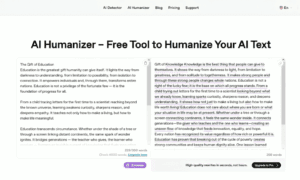In today’s data-driven world, businesses rely heavily on data to make informed decisions, deliver personalized experiences, and ensure operational efficiency. However, as data pipelines become more complex, ensuring the reliability and quality of that data becomes a major challenge. That’s where data observability comes in — a modern solution designed to provide end-to-end visibility across your data systems.
At its core, data observability is the process of monitoring, tracking, and understanding the health and behavior of data as it moves through various systems. It helps identify and resolve data issues before they impact decision-making, ultimately boosting trust in your organization’s data assets. For companies just starting their data journey, this concept can feel overwhelming. But with the right understanding, data observability can transform how teams manage and maintain their data infrastructure.
In simple terms, data observability allows teams to monitor the performance and accuracy of their data pipelines. It does so by collecting and analyzing key metrics such as data freshness, volume, schema changes, and lineage. These insights help teams quickly detect anomalies, pinpoint the root cause of issues, and take corrective action. As more companies prioritize data reliability, the importance of data observability continues to grow.
One of the most significant benefits of implementing data observability is improved data quality. Data errors such as missing records, duplicate entries, or outdated values can lead to flawed insights and poor business outcomes. By monitoring data health in real time, teams can catch these issues early and maintain data integrity across all departments.
Another major advantage is faster incident resolution. In the past, identifying the source of a data issue often required time-consuming manual investigations. With data observability, teams get a complete view of the data journey, allowing them to locate problems and resolve them more efficiently. This reduction in downtime leads to more reliable reporting and analytics.
Data observability also plays a key role in compliance and governance. With growing regulations around data usage and privacy, organizations need full visibility into where data comes from and how it’s used. Observability tools help track data lineage, making it easier to demonstrate compliance during audits and minimize the risk of data breaches.
For data teams, this approach encourages a proactive culture. Instead of reacting to problems after they occur, teams can monitor trends, predict potential issues, and optimize their systems accordingly. This proactive mindset saves time, reduces operational costs, and improves overall productivity.
Additionally, data observability supports better collaboration across teams. Data engineers, analysts, and business stakeholders can work together more effectively when they share a clear view of the data landscape. When everyone understands the state of the data, it promotes transparency and enhances decision-making across the organization.
Getting started with data observability doesn’t require an overhaul of your existing systems. Many organizations begin by identifying key metrics and establishing baseline monitoring for their most critical data pipelines. Over time, as needs evolve, they can expand their observability efforts to cover additional areas such as real-time alerts, automated diagnostics, and advanced analytics.
In conclusion, data observability is becoming a must-have capability for any organization that values accurate and reliable data. From improving data quality to enhancing operational efficiency and enabling better decision-making, its benefits are far-reaching. For beginners, understanding the fundamentals and gradually building observability into data operations can lead to stronger, more resilient systems. As data continues to power business innovation, data observability ensures that your insights remain trustworthy, timely, and actionable.





























